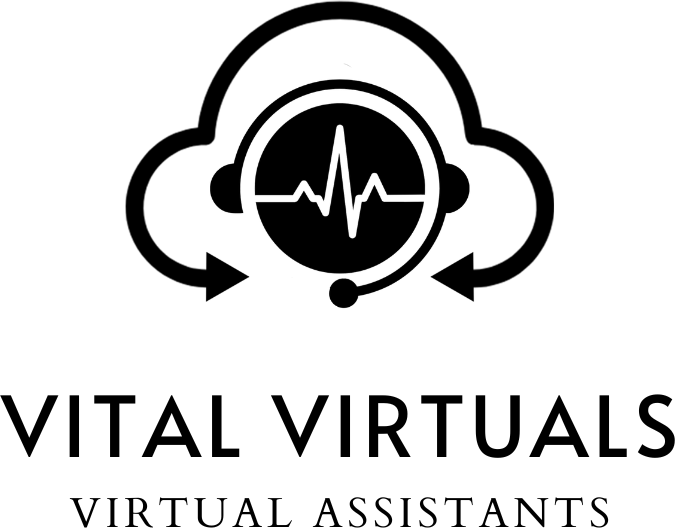Two weeks after a routine gallbladder removal, one of our client’s patients landed back in the ER. Dehydrated. In pain. Confused about discharge instructions.
It was preventable.
The clinic in question—a small, fast-moving general surgery practice in Arizona—had solid systems in place. Good EMR. Clear post-op protocols. But follow-up? Spotty at best. Their front desk was overwhelmed, and surgeons simply didn’t have the bandwidth to chase down recovery check-ins. No one had called the patient to ask if the meds were causing nausea, or whether she was eating.
That’s where we came in. Within a month of integrating one of our post-op–trained virtual assistants, their readmission rate dropped by 27%.
And the kicker? They didn’t add a single in-house FTE.
The Post-Op Problem Most Clinics Ignore
Hospitals focus heavily on discharge. But the real risks show up days later — at home, when patients are scared, sedated, or silently getting worse.
We’ve seen it across specialties:
- A cardiology group whose CHF patients weren’t checking their weight or sodium intake.
- An ortho office losing track of mobility check-ins after ACL repairs.
- A rural OB/GYN practice with rising post-C-section ER visits due to unmanaged pain.
Post-op follow-up is a high-stakes, low-visibility workflow — one that most clinics underestimate until it becomes a liability. Or worse, a lawsuit.
Misconception: “We Already Call Our Patients”
We hear this a lot. And we don’t doubt the intention.
But let’s get honest. If you’re relying on a front desk team juggling live calls, faxes, scheduling, and prior auths…
Those follow-up calls? They get bumped. Or rushed. Or skipped.
One internal medicine client told us their MA was “in charge” of post-discharge calls. Turns out, she had no protocol — just a sticky note on her desk. When we audited their data, 63% of follow-ups were either incomplete or never happened.
That changed quickly once a dedicated virtual assistant took over. Calls went from “check-the-box” to proactive, structured outreach.
What Post-Op Telehealth Support Actually Looks Like
Let’s walk through a typical day from one of our VAs embedded in a high-volume general surgery group in Texas:
7:30 AM CST: Logs into the EMR. Reviews flagged patients discharged in the last 3–5 days. Prioritizes based on risk factors (opioid usage, comorbidities, language barriers).
9:00 AM: Starts scheduled calls:
- Confirms medication compliance
- Screens for red flags (e.g., pain >5/10, fever, incision site concerns)
- Reviews mobility and diet progression
- Documents findings in the chart
- Escalates anything clinical to the nurse via secure chat
12:30 PM: Messages 2 patients who missed video follow-up appointments. Reschedules via Zoom. Sends prep checklist.
Afternoon: Creates next-day callback list, logs time, syncs with in-house care team.
Simple? Yes. But the impact is massive — especially when done consistently.
Nuanced Detail Most Don’t Know (But Should)
Here’s a thing you won’t hear from most staffing companies:
The best post-op VAs aren’t just medical assistants — they’re systems people.
Why? Because success hinges not just on the call itself, but on:
- Logging in the right EMR fields so clinicians see it
- Escalating through secure, HIPAA-compliant messaging channels (not Gmail)
- Timing outreach to match wound healing or rehab windows (day 3 vs day 7 vs day 14 matters)
We train our VAs to read clinical context — not just scripts.
A Lesson from a Burn Unit Client: Timing Is Everything
One of our more complex placements was with a wound care and burn clinic in California. They needed a VA to check on post-debridement patients 48 hours post-discharge — no earlier, no later.
In the first week, our VA made the calls too soon. Patients hadn’t unwrapped the dressings yet, so we missed the signs of infection.
We adapted fast.
Redesigned the callback timing. Added wound photo upload instructions. Created a custom intake template.
Result? They now detect infection 1.5 days earlier on average — and cut their readmission rate nearly in half.
The Compliance Side: HIPAA & Remote Staff
We get it — post-op care involves Protected Health Information (PHI). Clinics worry:
“How can we let a remote assistant access this safely?”
Here’s how we solve for that:
- Virtual Desktop Infrastructure (VDI): No local downloads. Every keystroke logged.
- Time-locked sessions: Access only during business hours.
- Secure Messaging: We use platforms like Spruce or Paubox for patient communication.
- Signed BAAs (Business Associate Agreements) with every clinic and every assistant.
We even had one client’s legal counsel audit our infrastructure — and got a green light.
Why This Matters Now: CMS Pressure and Value-Based Care
There’s a shift happening.
With CMS’s Hospital Readmissions Reduction Program (HRRP) and push for value-based reimbursement models, more clinics are being held accountable for what happens after the patient leaves.
Virtual assistants are a cost-effective way to extend care — without hiring another RN or burning out the MA staff. They don’t replace clinical eyes. They bridge the gap.
Unique Staffing Needs by Specialty
Not all post-op support is created equal. In our experience:
- Cardiology: Needs strict symptom screening scripts and escalation for chest pain or swelling.
- Orthopedics: Requires mobility milestone checklists and wound care touchpoints.
- GI/General Surgery: Needs pain management check-ins and dehydration screening.
- OB/GYN: Post-C-section calls need to be trauma-informed, especially for first-time moms.
We customize protocols by specialty — down to how messages are worded and when follow-ups occur.
If You’re Curious How This Might Work in Your Clinic…
Start with five discharged patients.
Seriously — we’ve done pilots where our VA simply calls the highest-risk five discharges each day. Even that moves the needle.
Then scale.
Because when recovery feels supported, patients don’t bounce back to the ER — they bounce forward.
FAQ: Virtual Assistants for Post-Op Follow-Ups
How do I know if my virtual assistant is HIPAA-trained?
We require annual HIPAA certification from all VAs — plus real-world training. You’ll receive proof of certification and role-based security protocols during onboarding.
What post-op tasks can I delegate to a virtual assistant?
You can delegate non-clinical follow-ups: pain score checks, mobility reviews, medication reminders, appointment scheduling, and symptom screenings — with clear escalation protocols.
What if a patient shares clinical symptoms during a call?
Our VAs are trained to pause and escalate. They don’t give medical advice — they immediately alert the assigned clinician and document the concern in the EMR.
Can my VA access our EMR securely?
Yes — we use secure, cloud-based Virtual Desktop Infrastructure and set up sub-user access with time-tracking and activity logging. Nothing is stored locally.
What if I only need help part-time?
That’s common. Many practices start with 10–15 hours per week, focused solely on high-risk patients. You can scale up or down based on need.
Final Thought from the Founder
In a world where every readmission is a cost — and every missed call a risk — clinics can’t afford to ignore the space between discharge and recovery.
At Vital Virtuals, we’re not just placing staff. We’re building safety nets around your patients — one phone call, one follow-up, one assistant at a time.
If that sounds like something worth exploring, let’s start small and build from there. We’ve done it before. And we’d be glad to do it again — for you.





